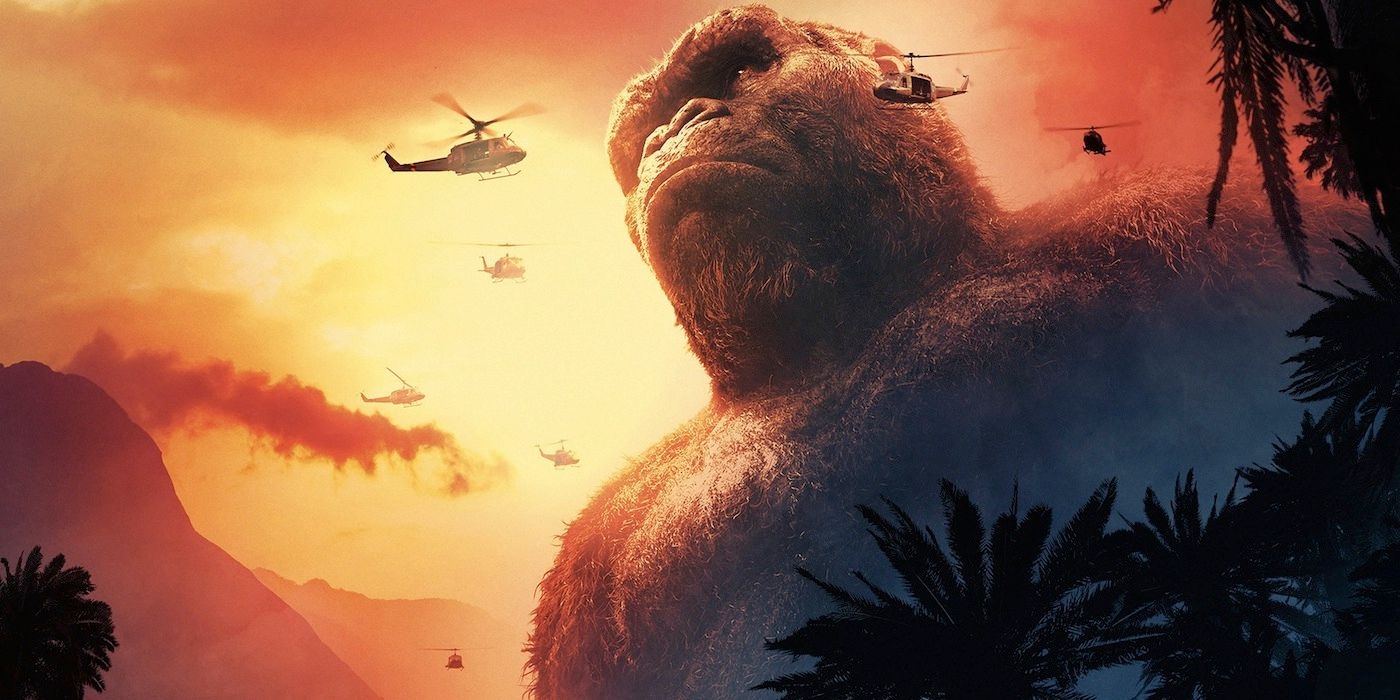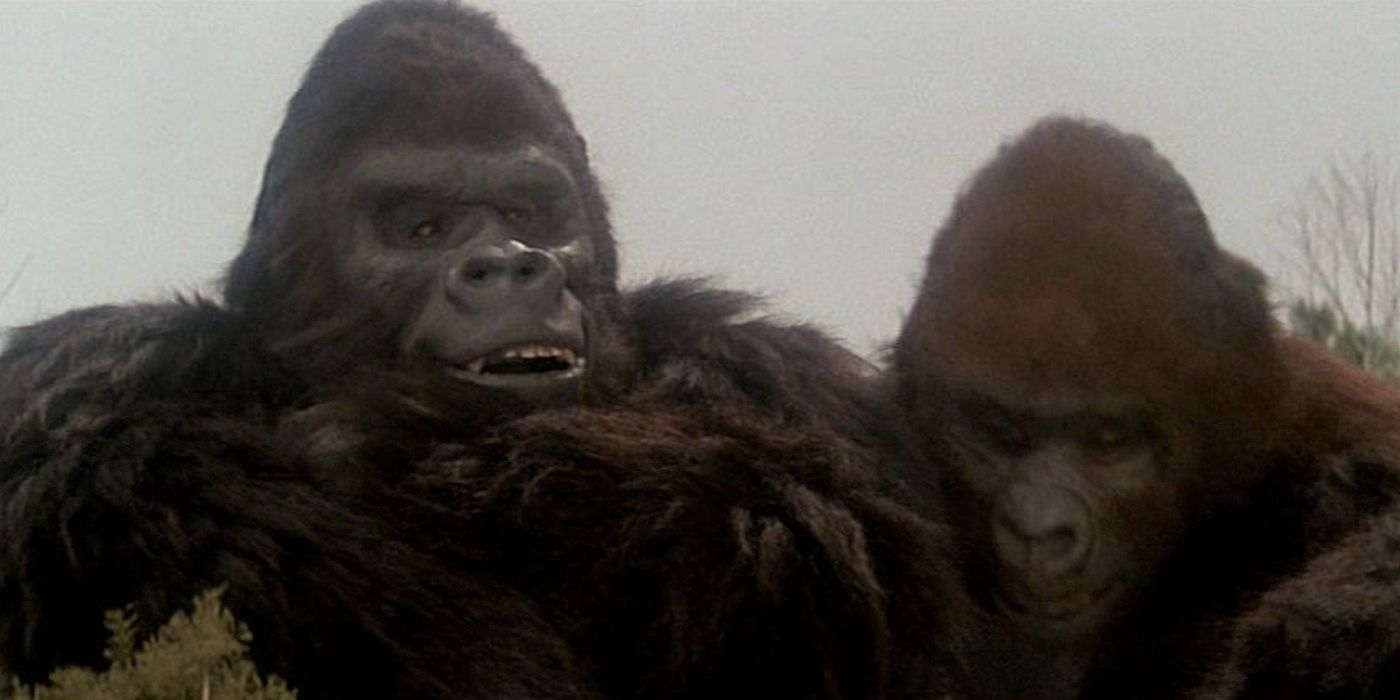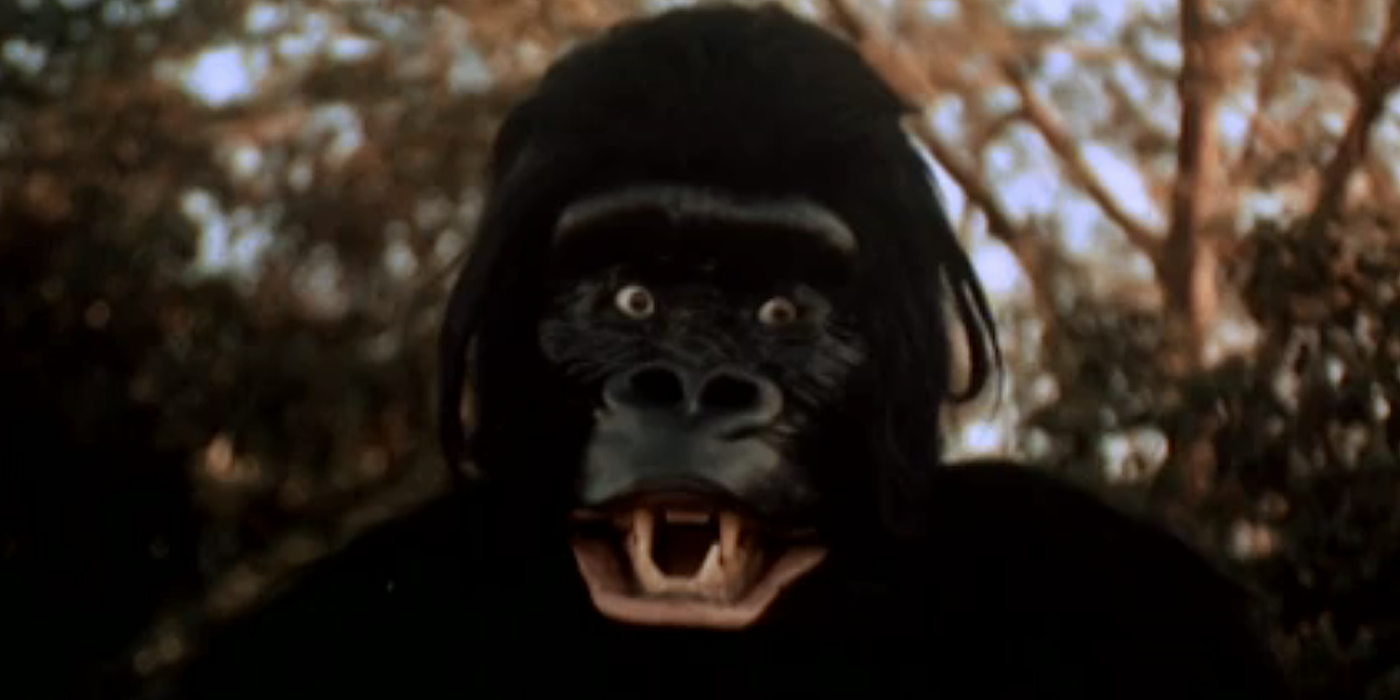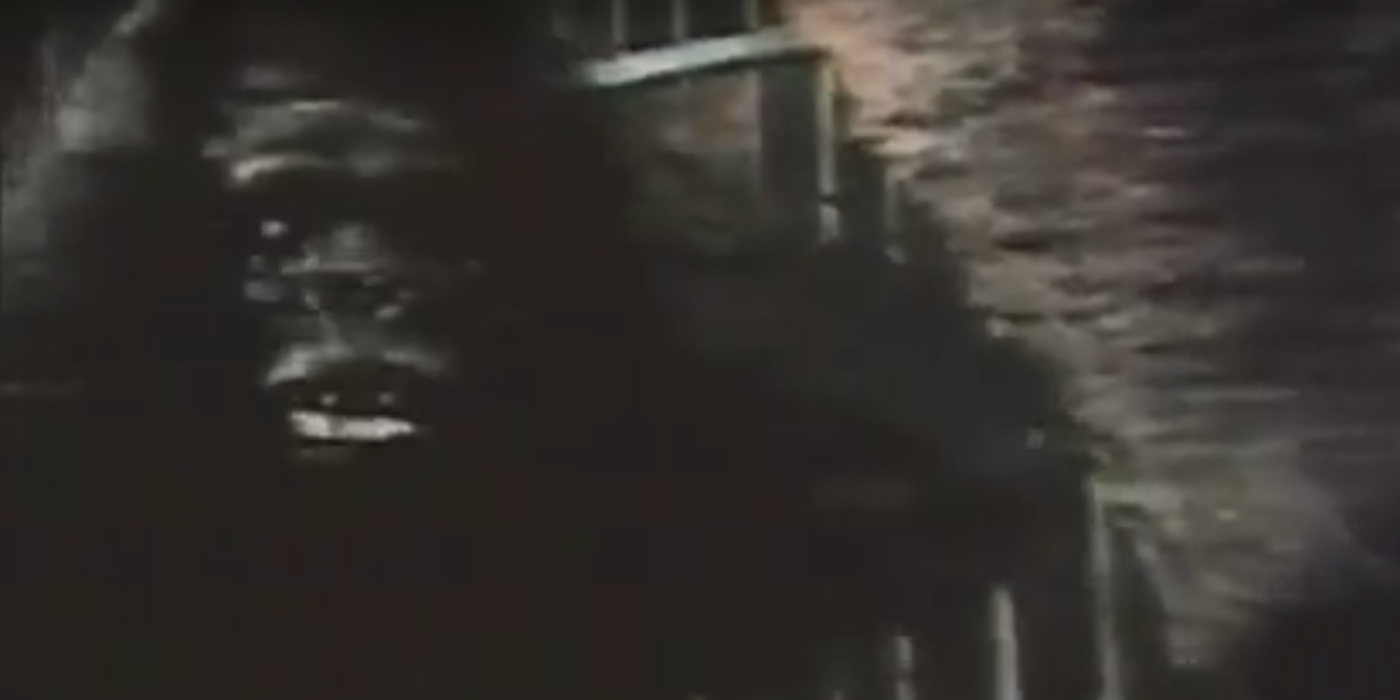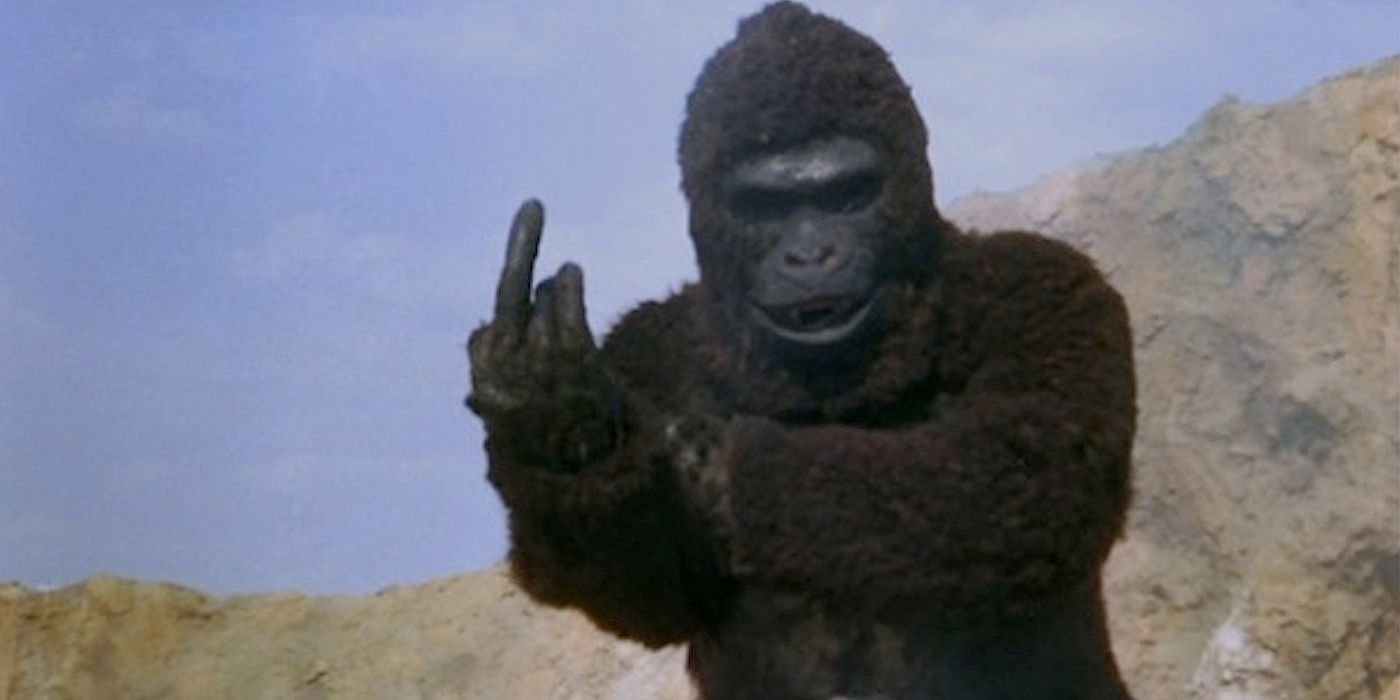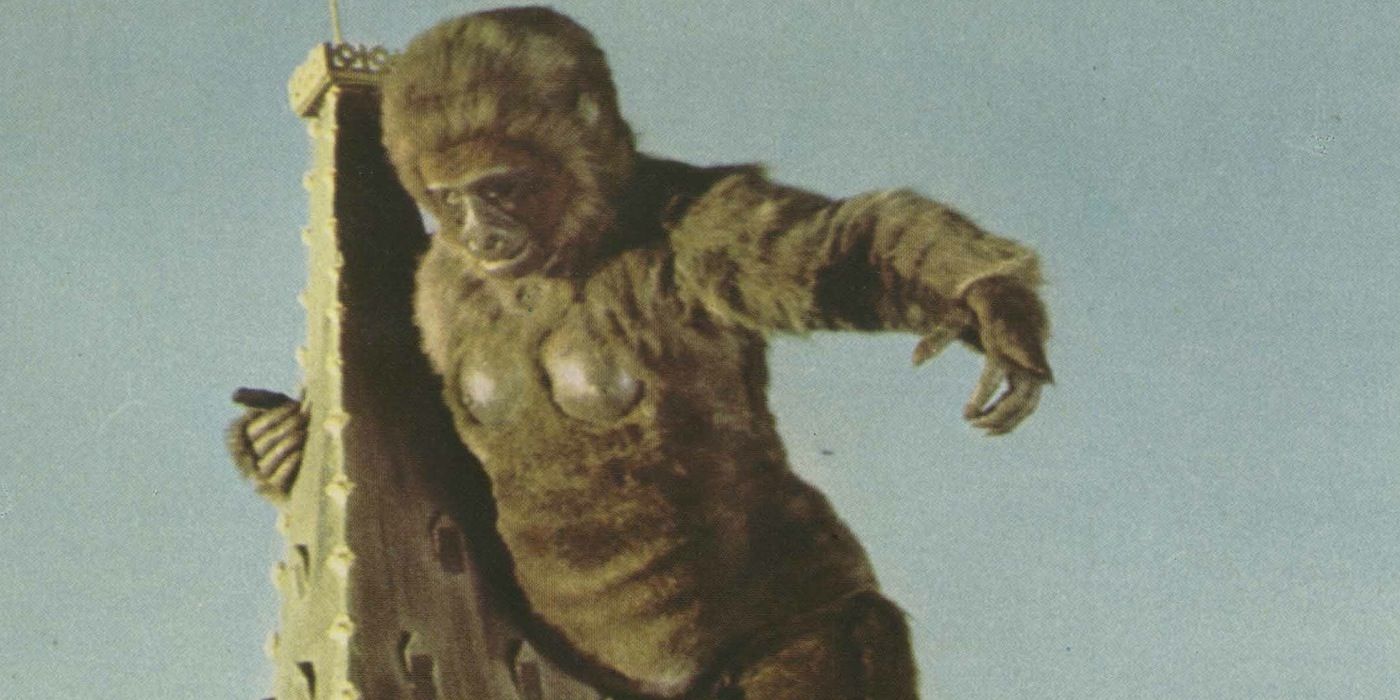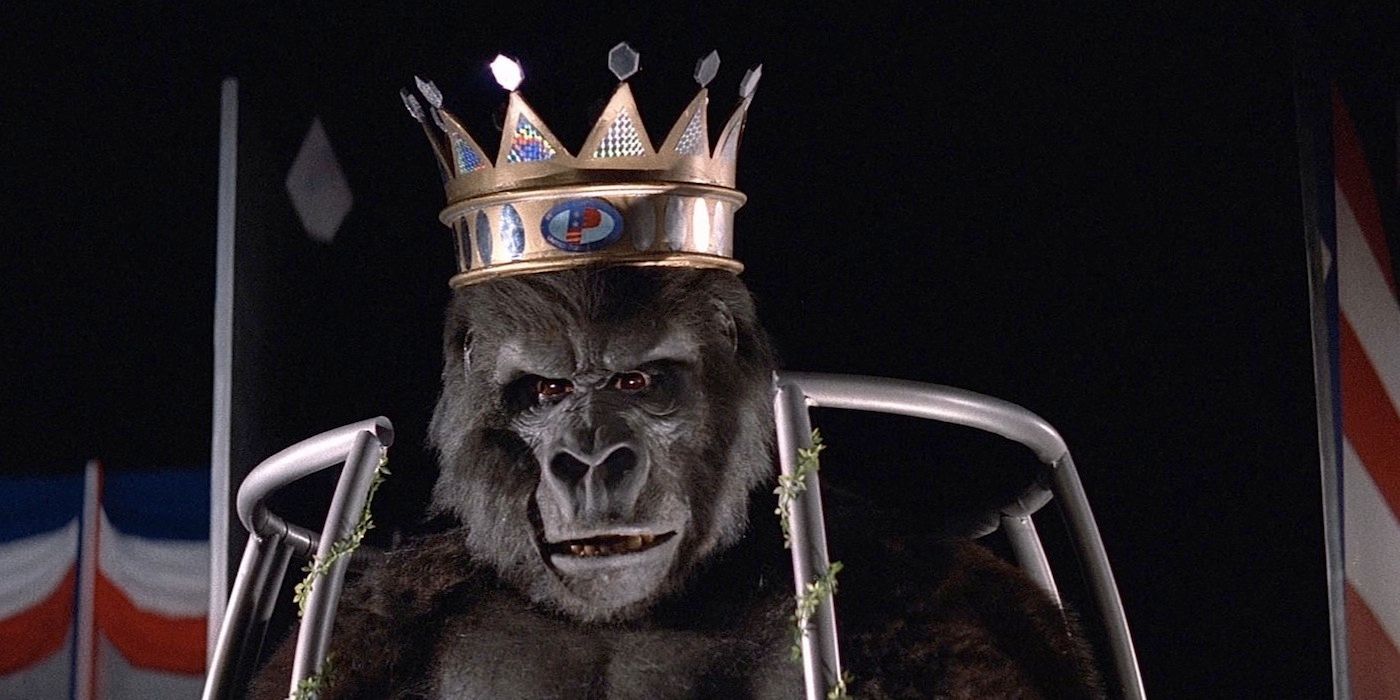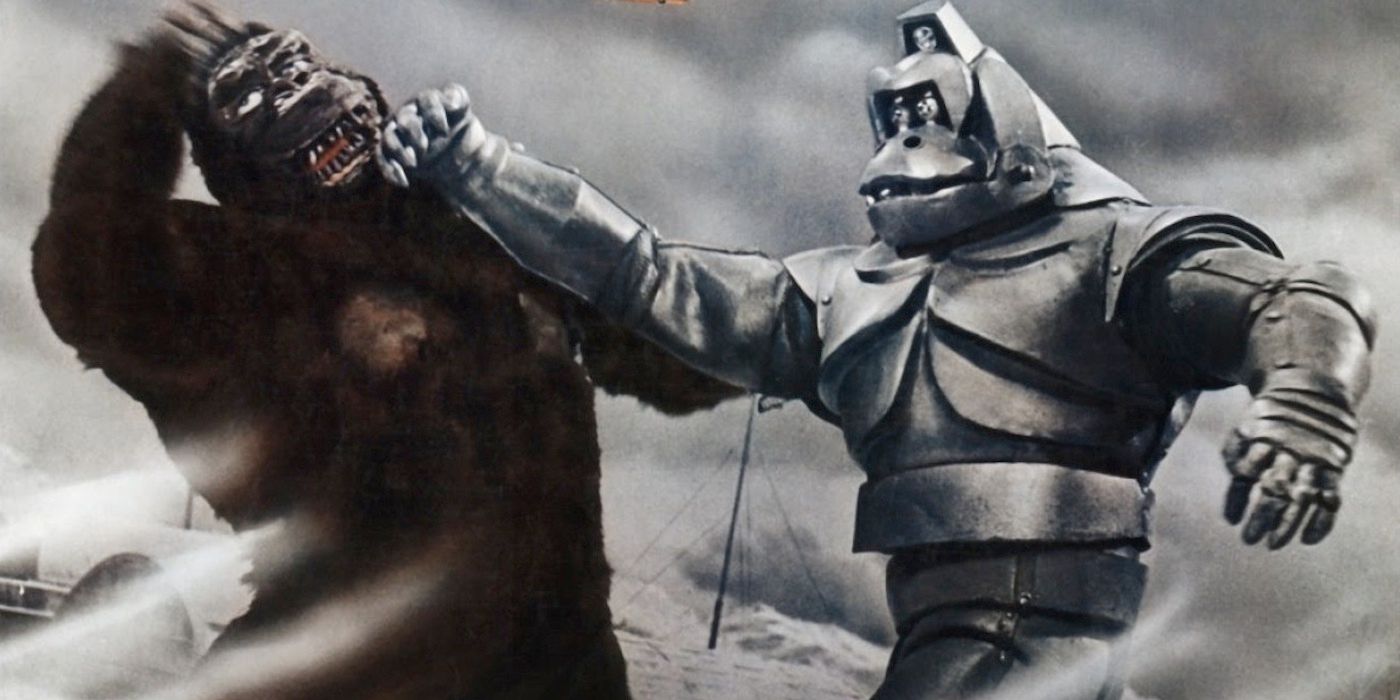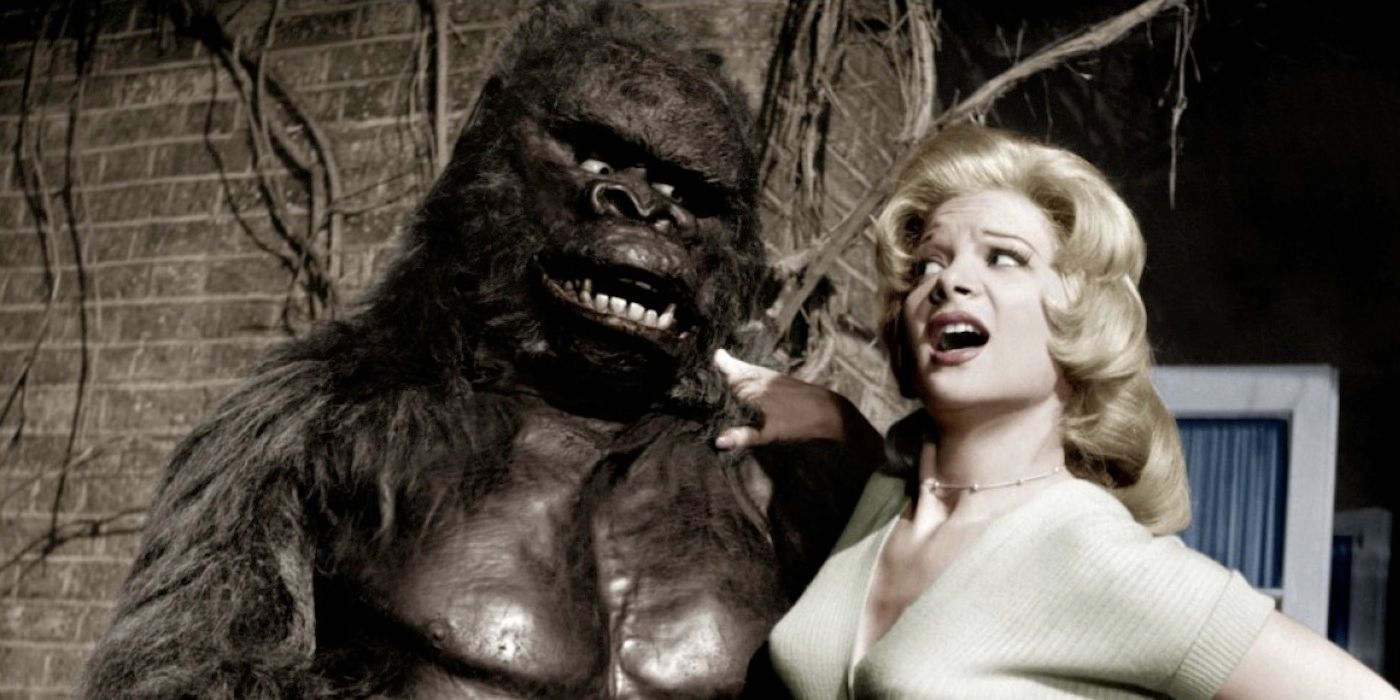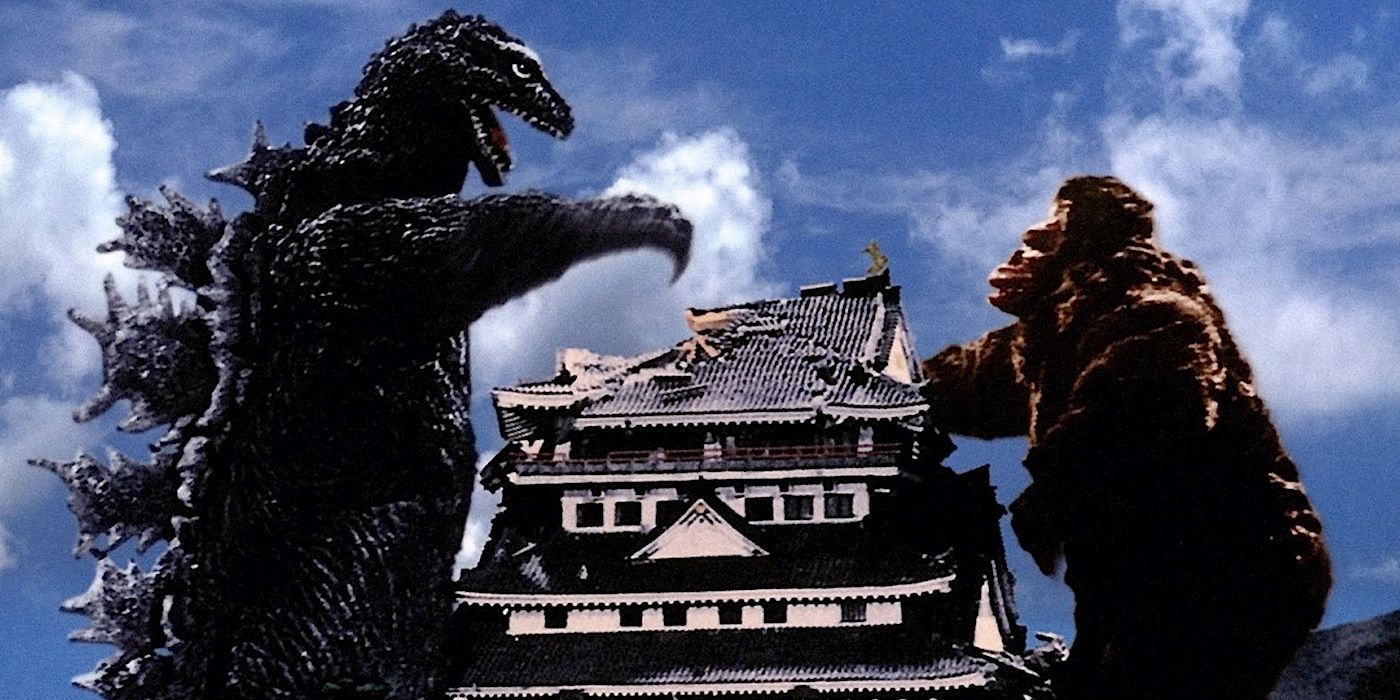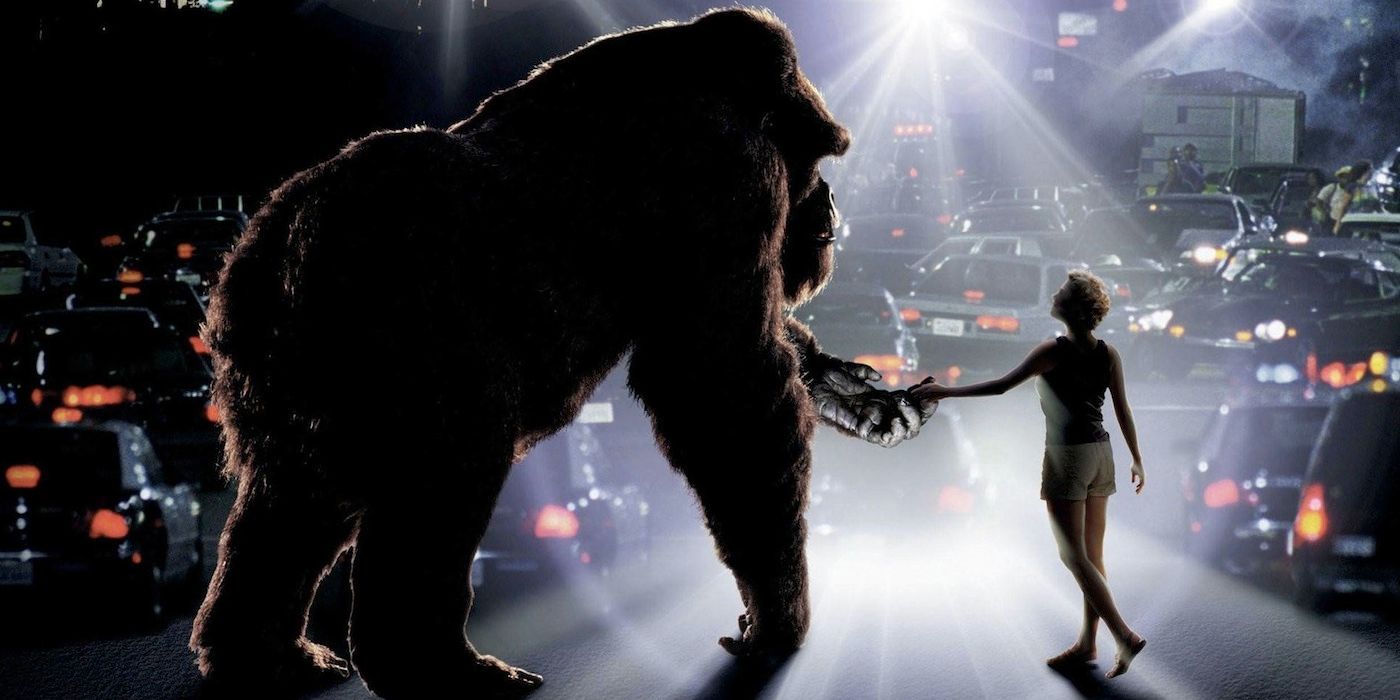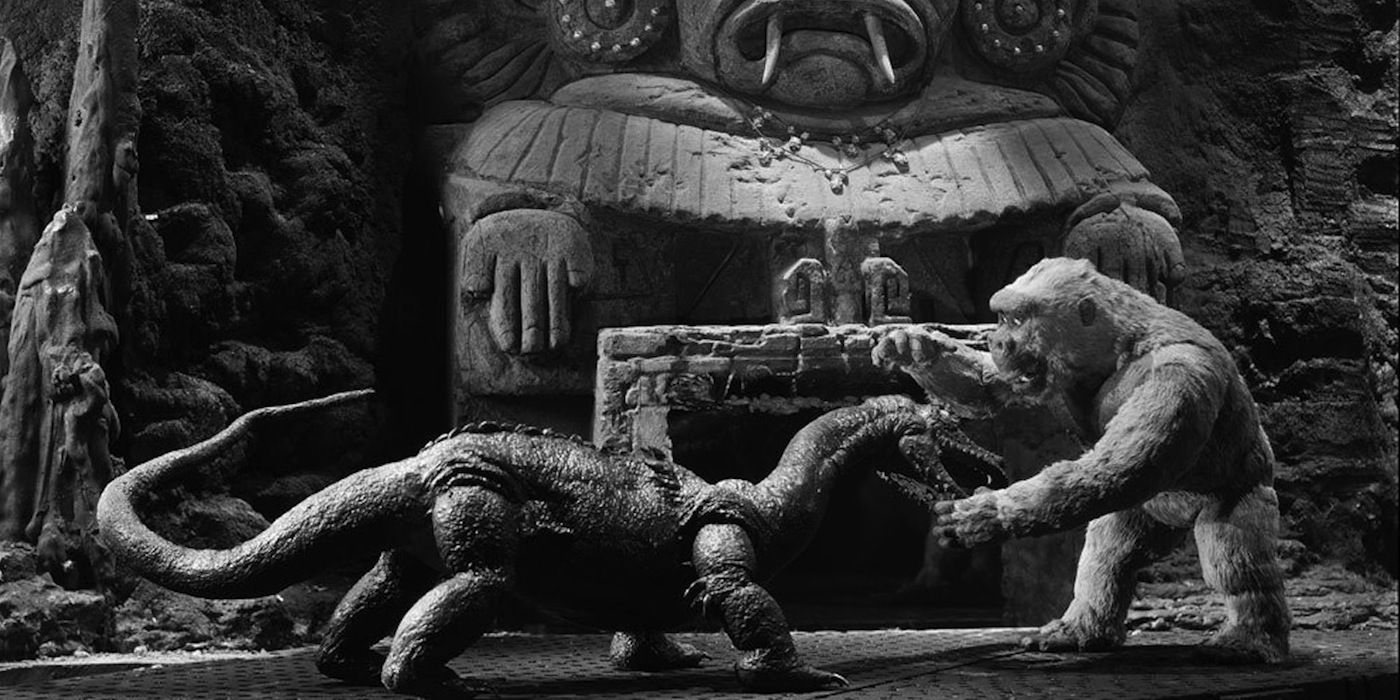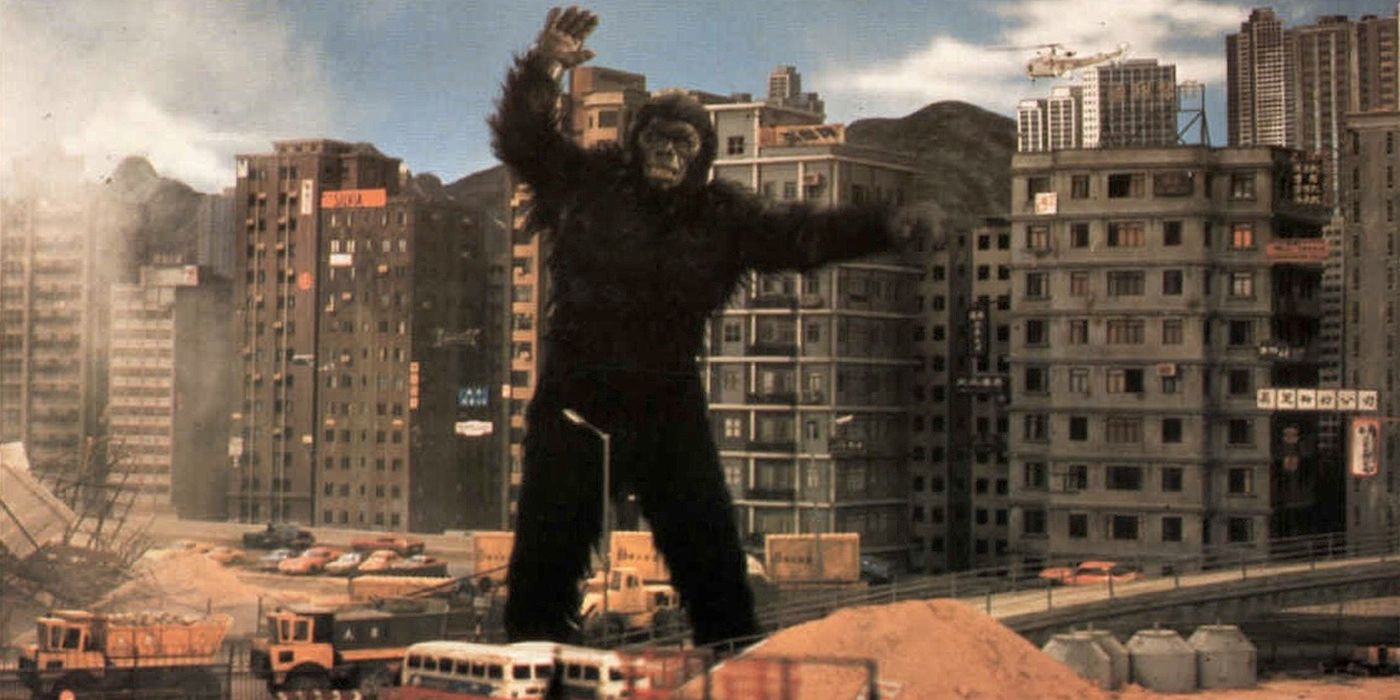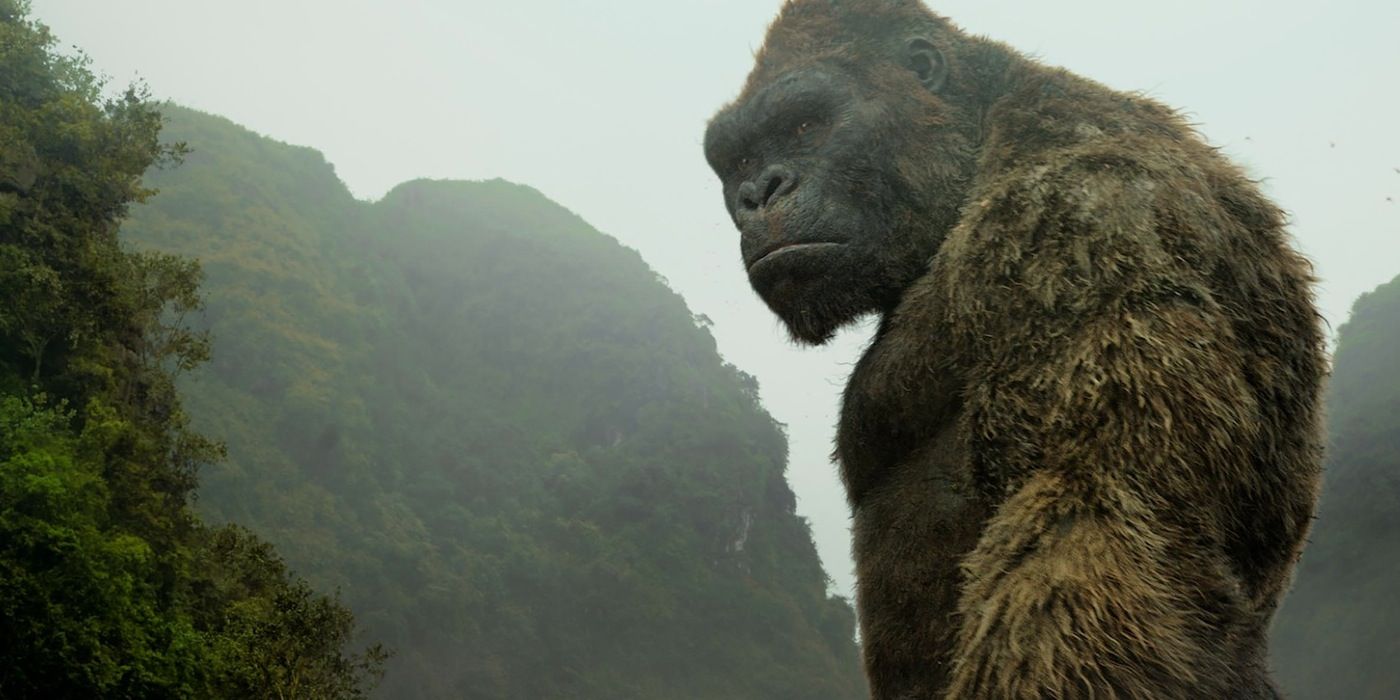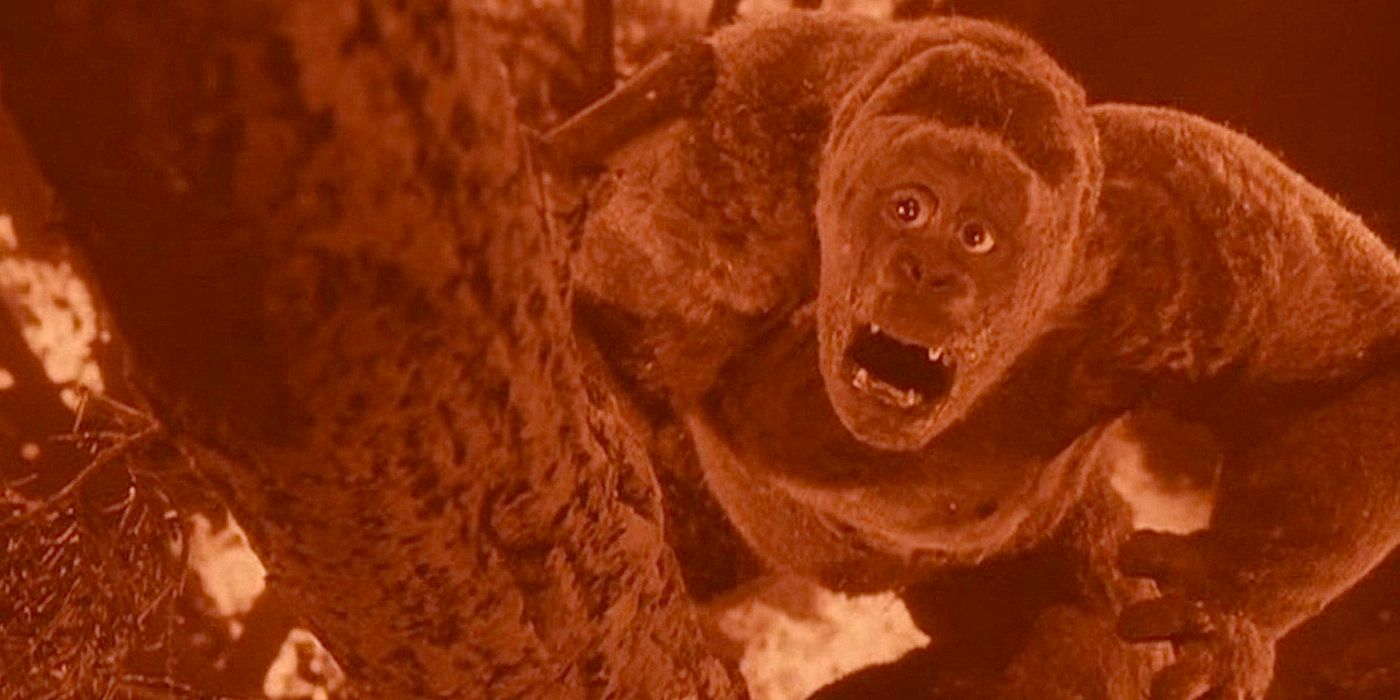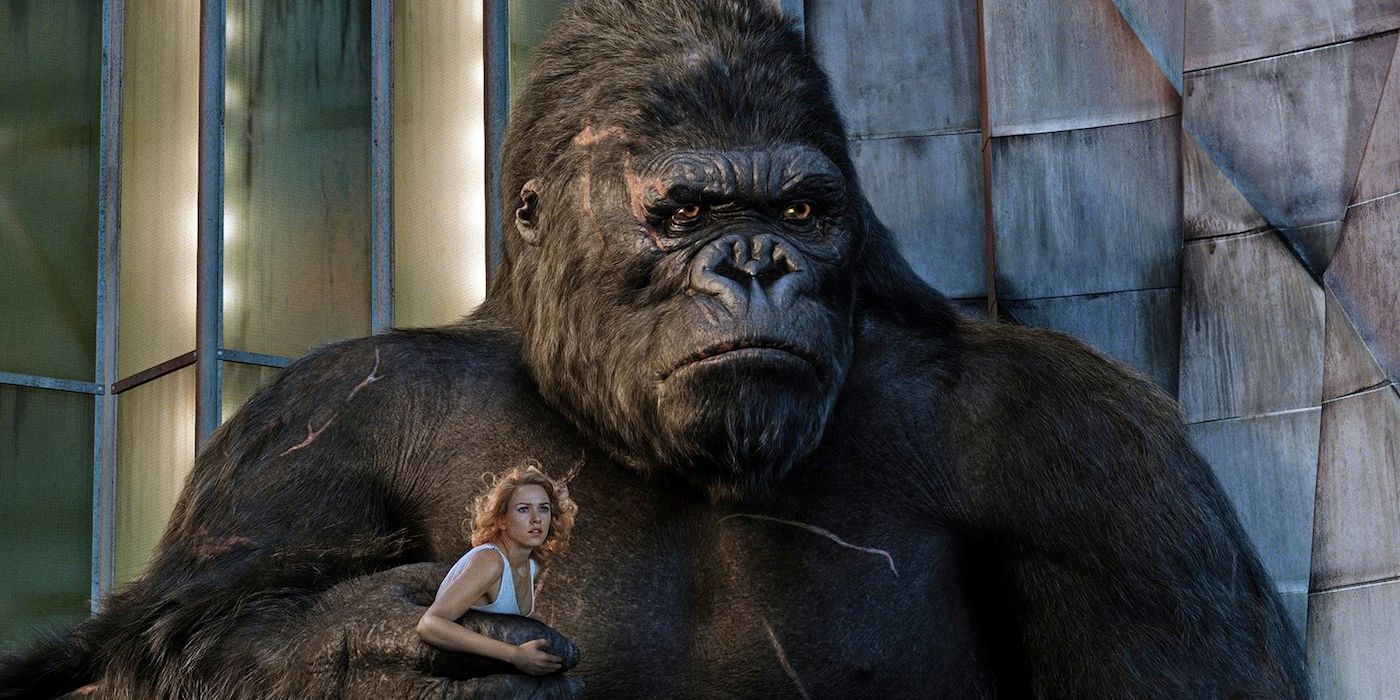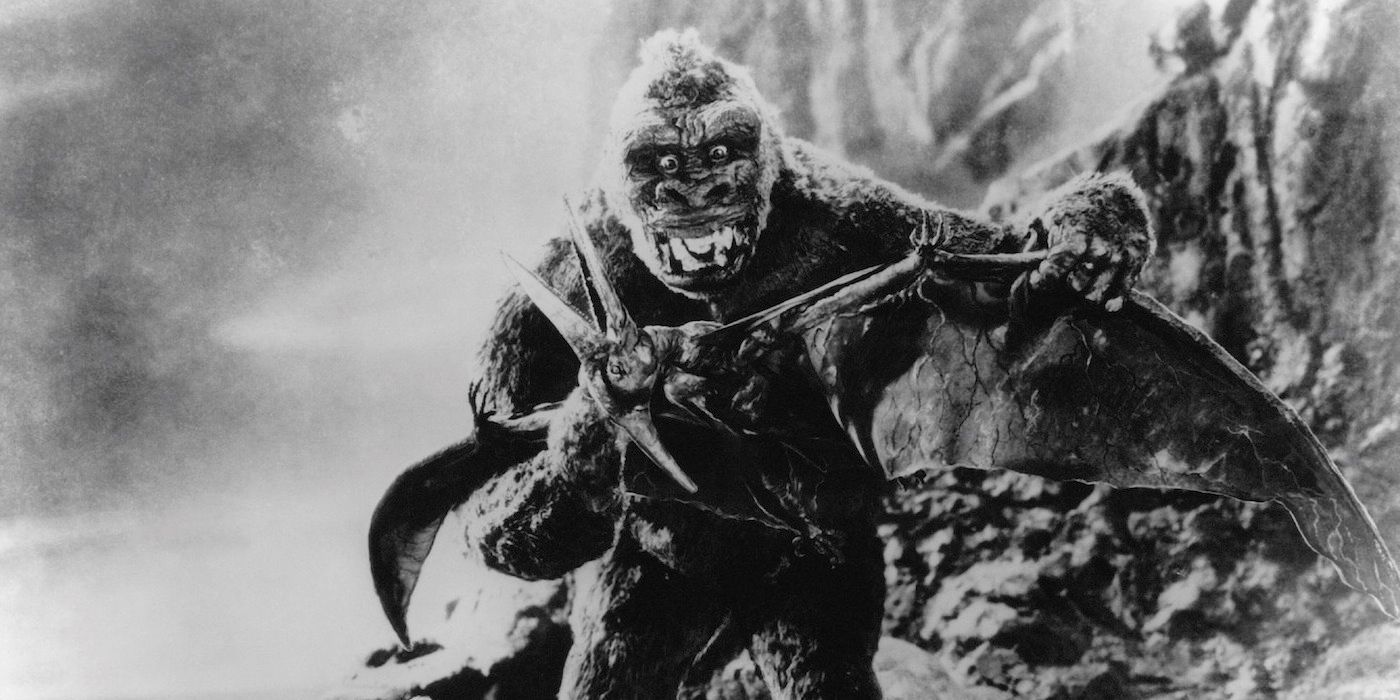The new release Kong: Skull Island isn’t the first time in 2017 that movie audiences will see King Kong thundering across the screen. After all, a more diminutive — and blockier — version of the character made a cameo appearance in The Lego Batman Movie. Yet a constant presence on the pop-culture scene is expected with a figure as iconic as this one.
Since King Kong first appeared in 1933, there’s been no small measure of great ape movies seeking to either honor or pillage his legacy. From a pair of long-lost Japanese films from the 1930s to a Bangladeshi musical in 2010, numerous filmmakers have sought to usurp the King’s throne through (usually) unauthorized versions. There have been animated television series, straight-to-video features, and even movies starring a professional wrestler named King Kong.
Then there are the following 16 theatrical releases, all of which were either officially licensed Kong productions or imitators hoping to snag a share of the box office pie. Here, then, is Every Giant Ape Movie, Ranked.
16. KING KONG LIVES
It might seem unfair placing 1986’s King Kong Lives at the bottom of this list, considering that — unlike several other great ape movies — it has a decent-sized budget, slick production values, and Linda Hamilton. But the hint of talent is actually what drives home its utter worthlessness — there’s simply no reason for this movie to be so bad.
Producer Dino de Laurentiis’ 1976 King Kong may have received a mixed reception from critics, but it proved to be a hit with audiences. Clearly ignoring the adage "strike while the iron is hot," de Laurentiis waited an entire decade before making the sequel.
That delay plays into the plot, as the film reveals that Kong survived his plunge off the Empire State Building and has since been in a coma. To revive Kong on the 10th anniversary of his fall, the attendant doctor (Hamilton) states that he needs both a heart transplant and a blood transfusion. The former comes courtesy of a gigantic artificial heart, installed during a sequence that stands among the worst in all Kong flicks. The latter comes courtesy of an oversized female gorilla that conveniently has just been discovered by an adventurer (Brian Kerwin, more Ratso Rizzo than Indiana Jones) in Borneo.
Kong is revived, the great apes fall in love, and, once baby makes three, Ms. Kong finally gets to put to use the most unconvincing animal boobs since the ones showcased earlier that same year in Howard the Duck.
15. THE MIGHTY GORGA
The cross-eyed gorilla isn’t the worst element of 1969’s unspeakably awful The Mighty Gorga. Admittedly, it’s a distracting to wonder why no one took a couple of minutes to fix the wayward peepers on the unfortunate ape costume borrowed for this picture, but even this costume looks genuine when compared to the dinosaur that eventually pops up. Seemingly made out of discarded popsicle sticks and chunks of cheap plastic, this just might be the most laughable prehistoric puppet to ever appear in a movie. Then again, that’s right in line with the rest of this amateurish slop, which finds a circus owner (Anthony Eisley) journeying to Africa to locate the giant gorilla that can save his business.
What’s more ludicrous: the spectacle of actors constantly flubbing (or, heck, even remembering) their lines or the parade of California beach bums hired to play African natives? Best (worst?) of all is the witch doctor gleefully sacrificing virgins to Gorga.
Incidentally, another creature appears later in the movie, and it’s far superior to the dinosaur spotted earlier. Lest anyone think the filmmakers were suddenly infused with a modicum of minute talent, be aware that this monster was actually “borrowed” (via stock footage) wholesale from another film — 1960’s Goliath and the Dragon, for those keeping score.
14. KING OF KONG ISLAND
To be clear, 1968’s King of Kong Island does not include any oversized apes. Yet given its title, how could it not be included?
An inept Italian production that appears to have been made for $.50, this movie was known as Eve, the Wild Woman in its homeland. That’s certainly a more fitting moniker, since the plot does involve a woman named Eve, and she is indeed wild. Played by Esmeralda Barros, she comes along late in the game to help hunky mercenary Burt Dawson (Brad Harris) exact his revenge against Albert Muller (Marc Lawrence), a fellow merc who once betrayed him. Muller is now spending his days toiling as a mad scientist — hidden away in his jungle lair, he’s busy planting tiny radio receivers inside the heads of gorillas, thus enabling him to control all their actions. It’s up to Eve, a female version of Tarzan, to help Dawson locate Muller’s hideaway and save his damsel in distress (Ursula Davis).
Obviously, there’s no King or Kong in King of Kong Island — heck, there’s not even an island (the story unfolds in Kenya). But American audiences weren’t the only ones to get Konged — excuse us, conned — by false advertising. In West Germany, the film played under the title King Kong and the Tan Goddess, while in Greece, the picture was known as The Runaways of King Kong.
13. A*P*E
The opening credits for 1976’s A*P*E signal the quality of this Korean production, as the word “Transportation” is misspelled as “Transporation.” Following this alphabet-challenged intro, the action begins with a dangerous 36-foot ape being sent to Disneyland(!) for a promotional tour. The creature breaks free from the ship’s cargo hold and proceeds to destroy the vessel, which actually looks like a toy boat bobbing around in some producer’s swimming pool.
The primate then battles a rubber shark (or, as the Spielberg-attentive ads plugged, “See A*P*E defy the JAWS of Giant Shark”) before heading to terra firma to watch kids frolic on a playground, demolish several buildings, and — because every Kong-size contract requires it — half-heartedly make off with a blonde.
The heroine in this case is an actress (Joanna DeVarona, later Joanna Kerns of Growing Pains fame) who terrifyingly shrieks like one of the victims in The Last House on the Left before inexplicably turning into Mae West and purring at the great ape, “Be gentle, big fella.”
Rarely in the annals of cinema has so much plywood and lighter fluid been expended in the service of visual effects magic — don't miss the falling rocks that flake off Styrofoam pieces as they hit the ground.
A*P*E, incidentally, stands for Attacking Primate monstEr, although the movie also made the rounds under The Great Counter-Attack of Kong Kong, Hideous Mutant, and Attack of the Giant Horny Gorilla.
12. QUEEN KONG
Like A*P*E, 1976’s Queen Kong was a King Kong rip-off produced to profit off the hype surrounding the Dino de Laurentiis version making its way into theaters. Unlike the Korean flick, this British spoof barely saw the inside of theaters, as a lawsuit hurled by de Laurentiis successfully blocked its release in most of the world (and certainly in the U.S. and England).
As the title suggests, the film is basically a gender-switch King Kong, with a giant female gorilla mixing it up with a slacker named Ray Fay (Robin Askwith). Drowning in kitschy excess, Queen Kong strains hard for laughs that simply don’t materialize — the opening song sets the tacky tone with such lyrics as, “She’s a genie who ain’t teeny, She’s the queenie, queenie for my weenie. When I’m feeling mighty spunky, I wanna do it with my hunky monkey.”
Yet what’s interesting about the movie is how it predates pictures like Airplane! and The Kentucky Fried Movie as a spoof of all trades, with timely zingers aimed at such hits as Jaws, The Exorcist, and Airport 1975. Even more intriguingly, Queen Kong positions itself as a feminist flick, with Ray Fay delivering a climactic speech about how the oppressed ape represents all women attempting to assert their independence in a patriarchal society.
11. KING KONG (1976)
“Everybody loves the monkey!,” producer Dino de Laurentiis would frequently chirp, explaining why he decided to remake a classic that had long been hailed as one of cinema’s finest achievements. But 1976’s King Kong turned out to be a ham-fisted version of the venerable yarn, replacing the excitement and gravitas of the 1933 original with a jokey attitude that bordered on camp. The only area in which it improved upon its predecessor was the relationship between the ape and the woman he loves, and even this was subsequently handled better in Peter Jackson’s 2005 update.
Jeff Bridges, almost as hirsute as Kong, gamely tries to lift the proceedings as a paleontologist, with Charles Grodin doing his part as a greedy oil company executive. But in the central role of Dwan, newcomer Jessica Lange fights a losing battle against a script that transforms her into a New Age ninny (when first encountering Kong, she inquires about his zodiac sign) — her performance led to withering reviews that kept her off the screen for three years.
King Kong somehow earned an Oscar for its visual effects, sharing that year’s honor with the far more accomplished Logan’s Run. Considering the shoddiness of the visuals — especially in the close-up shots when Kong unconvincingly leers at Dwan as if he were auditioning for a Benny Hill skit — there might be some truth to the long-held rumor that some Academy members resigned in disgust after their colleagues voted for the movie.
10. KING KONG ESCAPES
Today, Rankin/Bass is best known for such animated TV specials as 1964’s Rudolph the Red-Nosed Reindeer and 1970’s Santa Claus Is Comin’ to Town, but among the company’s prolific output during its heyday was 1966’s The King Kong Show, which aired as part of ABC’s Saturday morning lineup for a couple of seasons. The 1967 feature film King Kong Escapes, a live-action collaboration between Rankin/Bass and Japan’s Toho Studios, was directly inspired by the animated series, which explains why it seems mainly geared toward children.
It’s certainly perky enough to maintain adolescent interest, as Kong squares off against Mechani-Kong, a robotic replicant created by the nefarious Dr. Who — no, not that Doctor Who, though he does bear a passing resemblance to Dr. No. In fact, much of King Kong Escapes plays like a romper room version of a James Bond adventure, even borrowing Mie Hama, Kissy Suzuki in the 007 outing You Only Live Twice, to portray the slinky villainess Madame X.
As for Kong, his dance card is filled with battles against Mechani-Kong, Gorosaurus, a sizable sea serpent, and a rather raggedy monkey costume.
9. KONGA
Herman Cohen met with success by producing and (under pseudonyms) writing the 1957 hits I Was a Teenage Werewolf and I Was a Teenage Frankenstein, so why not go for the hat-trick by unleashing I Was a Teenage Gorilla onto an unsuspecting world? Alas, a rash of similarly titled cheapies from other filmmakers (Teenage Caveman, Teenage Zombies, Teenagers from Outer Space, etc.) led to understandable audience burnout — by the time Cohen was ready to release his monkey movie in 1961, he opted instead to title it Konga.
Set in England, the titular gorilla only grows to Kong-size proportions at film’s end — before that, he begins life as a harmless chimpanzee brought back from Africa by Dr. Charles Decker (Michael Gough), a scientist who’s obsessed with perfecting his growth serum. Testing the formula on the chimp, he quickly learns that it turns the little fellow into a hulking gorilla ready to carry out his murderous bidding.
A standard entry in the “mad scientist” genre, Konga is elevated by the suitably intense turn by longtime horror veteran Gough (perhaps best known for playing Alfred to Michael Keaton’s Batman). But once the monkey gets super-sized, the terrible visual effects take over, with the climactic sequences where a guy in an ape suit stands listlessly next to a Big Ben model while the Brits supposedly blast away.
8. KING KONG VS. GODZILLA
It almost feels as if 1962’s King Kong vs. Godzilla deserves two spots on this list, considering the vast differences between the original Japanese cut and the radically reworked American version.
The genesis of the film began with, appropriately enough, Willis O’Brien, the visual effects genius behind the original 1933 King Kong. O’Brien had long envisioned making King Kong vs. Frankenstein, but when no American studio jumped at the opportunity to finance such an awesome-sounding movie, King Kong eventually ended up (much to O’Brien’s displeasure) at Toho, the outfit behind the Godzilla flicks.
King Kong vs. Godzilla was a smash in its homeland, but for U.S. consumption, many of the more satiric moments were axed and replaced with tedious scenes of a United Nations broadcaster (Michael Keith) and a stuffy scientist (Harry Holcombe) alternately providing deadening exposition.
Still, “the most colossal conflict the screen has ever known” (per the posters) was the sole reason global audiences packed theaters, and viewers of either version got their money’s worth. While the Kong costume itself was particularly woeful, the thrill of seeing these mighty monsters rumble kept customers content — and convinced Toho to fully throw its muscle behind Godzilla via countless movies, merchandise, and more.
7. MIGHTY JOE YOUNG (1998)
Disney’s 1998 Mighty Joe Young, a remake of the popular 1949 version, is at its best when it — pardon the pun — apes its predecessor and falters when it attempts to strike out on its own.
As before, the movie details the loving relationship between a young woman (Charlize Theron) growing up in Africa and the oversized gorilla she hopes to protect from civilization. Theron brings enormous warmth to her role, and effects guru Rick Baker uses animatronics and a dash of CGI to fashion a central creature that looks absolutely believable from first frame to last.
Unfortunately, the majority of the film proves to be even more hokey than its forebear, thanks chiefly to the addition of one-dimensional villains (poachers and black marketeers) seeking to make life miserable for our hirsute hero. Still, it’s hard to resist a film in which Bill Paxton (RIP), as an affable conservationist, addresses Mighty Joe as “ya big palooka.”
Like the ’49 model, this Mighty Joe Young earned an Oscar nomination for its visual effects; unlike its predecessor, it failed to win.
6. SON OF KONG
The concept of cash-in-quick sequels is far from a modern phenomenon, as evidenced by the existence of 1933’s Son of Kong.
The 1933 King Kong was such a smashing success that the studio excitedly demanded that a follow-up hit theaters within the same calendar year. Nine months later, Son of Kong was released, but despite reassembling most of the key personnel from the previous picture, it was merely a pale — if likable — shadow of its predecessor.
Filmed on a much smaller budget, it brings back King Kong co-star Robert Armstrong as Carl Denham, here returning to Skull Island to search for treasure and running across Kong’s cuddly albino kid. “Little Kong” is almost incidental to the story and doesn’t even show up until well past the halfway point — primarily, this is about Denham’s crisis of conscience regarding his treatment of Kong in the first film. In that respect, it’s an interesting piece, but it’s far too short at 70 minutes, and it ends with an all-too-convenient earthquake making short work of the various storylines.
5. THE MIGHTY PEKING MAN
Originally released in the U.S. as Goliathon, 1977’s The Mighty Peking Man is inarguably the best of the countless Kong rip-offs that have glutted the marketplace. It’s easy to see why both Roger Ebert and Quentin Tarantino were enthusiastic fans.
The plot borrows from both King Kong and Mighty Joe Young, as an explorer named Johnny (Danny Lee, later of John Woo’s The Killer) stumbles across not only an oversized apeman known as Utam, but also the lovely blonde who’s been his companion over the years. She’s Samantha (Evelyne Kraft), who survived the plane crash that killed her parents and has since been running around the jungle clad only in skimpy, Tarzan-approved duds. She and Johnny fall in love and travel with Utam to Hong Kong, where all hell breaks loose.
The Mighty Peking Man doesn’t so much flow as lurch forward, and cheesy interludes (such as Samantha frolicking with leopards in slow motion) are the norm during the film’s first half. But because the project was generously financed by the Shaw Brothers, those purveyors of classic kung fu flicks over the decades, the model work is far more polished (if not always convincing) than what's seen in other similar efforts. Yet what’s most notable about The Mighty Peking Man is the utter nihilism that rears its head during the final act. The King Kong template is one that naturally lends itself to tragedy, but the consequences here are downright startling.
4. KONG: SKULL ISLAND
The second film in Legendary's up-and-running MonsterVerse, 2017’s Kong: Skull Island is a definite improvement over 2014’s Godzilla — it’s also frequently clever, occasionally inane, and always exciting.
Certainly, the human players matter less than ever, with all but one character painted in the broadest strokes possible. The glorious exception is Hank Marlow, played with the right mix of cheer and fear by John C. Reilly. A fighter pilot who’s been stranded on Skull Island since World War II (the film is set in 1973), Marlow proves to be the most sympathetic character in the film, the go-to figure for audience involvement.
The others are the usual stock assemblage of hunky adventurer (Tom Hiddleston), feisty pacifist (Brie Larson), gung-ho military man (Samuel L. Jackson), government wonk (John Goodman), and various expendables in the form of scientists and soldiers. All are part of an expedition that arrives on Skull Island and proceeds to get ambushed not only by Kong but by other oversized inhabitants.
The script, cobbled together by several sets of hands, isn’t nearly as impressive as the direction by Jordan Vogt-Roberts — replete with visual nods to Apocalypse Now — although it’s as a creature feature that Kong: Skull Island works best. The visual effects are truly dazzling, particularly when employed to bring the movie’s towering star to roaring, rattling life.
3. MIGHTY JOE YOUNG (1949)
"Presented" by no less than the legendary John Ford, 1949’s delightful Mighty Joe Young reunited the key personnel from 1933's King Kong — director Ernest B. Schoedsack, writer-producer Merian C. Cooper, co-scripter Ruth Rose and special effects wizard Willis O'Brien — for another story about an ape run amok.
Comparatively more benign than Kong, but still a dangerous, oversized animal, Joe lives in Africa with his human companion Jill Young (Terry Moore), who has raised the gorilla since infancy. Jill gets talked into bringing Joe to America by garrulous showman Max O'Hara, who wants to use him as the main attraction in his jungle-themed nightclub. To play Max, the filmmakers once again turned to Robert Armstrong, who’s basically asked to portray the same type of role he played in King Kong and Son of Kong.
Mighty Joe Young climaxes with a devastating fire at an orphanage; interestingly, this lengthy segment was filmed in sepia tone rather than black-and-white. In creating the picture’s stop-motion effects, O'Brien was assisted by a young Ray Harryhausen — the film earned the Best Special Effects Oscar, but its lackluster box office performance led to the cancellation of a proposed sequel, Joe Meets Tarzan.
2. KING KONG (2005)
Whereas the 1976 version of King Kong was made by profiteers, the 2005 remake was handled by a filmmaker with a genuine affinity for the 1933 original.
Fresh from his success with the Lord of the Rings trilogy, Peter Jackson turned his attention to honoring one of his favorite films with an expensive homage. Jackson’s King Kong was a box office hit, earned Oscars for its sound and visual effects, and showcased a superb turn by Naomi Watts as Ann Darrow. Its chief drawback is its length, since Jackson took the template of the 103-minute original and stretched it to 190 minutes. This hefty running time aids the first act, with filmmaker Carl Denham (Jack Black) preparing to head out into uncharted waters to make his epic, and the third act, which places the action back in New York in time for Kong’s fateful encounter with the Empire State Building. But the middle section, set on Skull Island, is where the film lags, due to Jackson’s insistence on steering the story away from Kong and focusing on the territory’s dinosaurs and other beastly inhabitants. It’s as if Jackson wanted to make his own Jurassic Park.
Still, Kong himself is a visual marvel, with an expressive range of emotions sweeping across his face (as usual, Andy Serkis handles motion-capture duties), and fans of Jackson's Dead Alive will chuckle at the sign in the ship's cargo hold that reads "Sumatra Rat Monkey.”
1. KING KONG (1933)
A gargantuan hit upon its original release and subsequent reissues, 1933’s King Kong goes beyond being a mere staple of film history. In much the same manner as The Wizard of Oz and It's a Wonderful Life, this masterpiece about “The Eighth Wonder of the World” long ago entered into the national consciousness as an enduring part of our heritage.
As Ann Darrow, the beauty who captures the beast’s oversized heart, Fay Wray became an overnight star, although equally memorable is Robert Armstrong as Carl Denham, the boisterous filmmaker who sets the story in motion with his plan to shoot his next exotic picture on the uncharted Skull Island.
Under the auspices of producer-directors Merian C. Cooper and Ernest B. Schoedsack, Willis O'Brien (with a major assist from Marcel Delgado) contributed extraordinary stop-motion effects that brought to life many classic sequences, including Kong’s destruction of a native village, his battles with prehistoric beasts, and his tragic last stand atop the Empire State Building. O’Brien’s effects were both innovative and influential, and the same goes for Max Steiner’s excellent music, credited not only as the first feature-length movie score but also one of the earliest to employ a full symphony.
---
What's your favorite King Kong movie (or rip-off)? Let us know in the comments!

